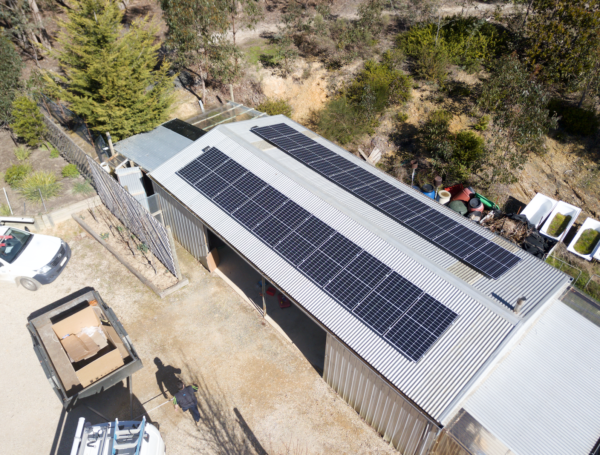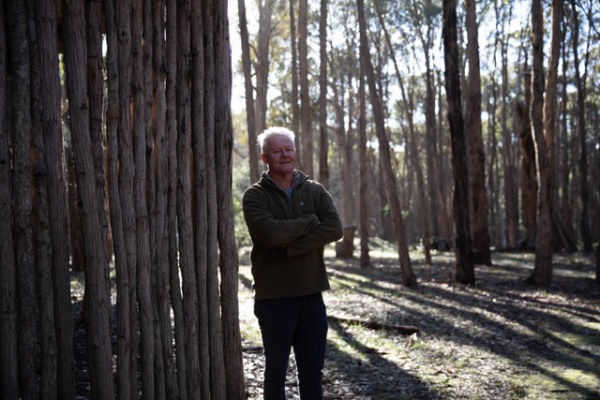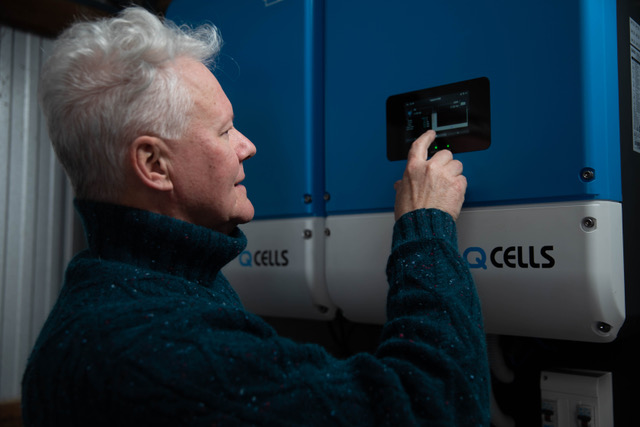Falling trees, fire risk, wobbly transmission lines at the edge of the grid … Australia’s property owners are finding solutions to gnarly energy problems in a range of new integrated solar-plus-battery solutions that have the smarts to manage household energy use for reliable supply — even through times of blackout.
Among a life-raft of new integrated battery systems launched at All Energy Australia last month was Korean manufactured Q.Home by Hanwha Q Cells.
Today Q Cells released a case study from the first installation of the system, which took place in August, prior to All Energy, in the leafy surrounds of Woodend, Victoria, where trees fall across power lines frequently enough to cause inconvenience to the Briertys who live with their two daughters on an eight-hectare property.
“I knew there had to be a better way,” says Ross Brierty, who says the family lost access to its water supply, which is delivered by an electric pump, due to power interruptions that occurred every two to three months.
“I wasn’t sure if the technology was there yet with solar and batteries, or how complicated it would be to implement,” he adds.
Electricity retailer Diamond Energy proposed that the Briertys install an integrated solar, battery and control solution in the form of 4 kWh of Q Cells’ Q.Home hybrid energy storage and 6.6 kW of Q Cells Q.Peak Duo-G5 rooftop solar.

Image: Q Cells
The Q.Home fully integrated hybrid inverter and battery can be scaled in units of 4 kWh, up to a total of 12 kWh, if required in future.
On the Woodend property, the system is owned and operated by retailer Diamond Energy and the Briertys paid an upfront initialisation fee, now followed by a fixed monthly tariff.
Among the benefits of the all-Q.Cells system is an all-inclusive 10-year product warranty; and, importantly for the Briertys, back-up functionality that ensures customers’ essential loads can be powered during blackouts.
“Electricity is so important,” says Kath Brierty. “Everyone has that one appliance, whether it’s an electric pump for their water, or their Wi-Fi router, or microwave oven that they can’t function without. It’s great that all of our vital power uses are able to be supported by the battery.”
The Briertys, who strive to run a sustainable home and property, raising chickens and bees, composting and growing some of their own vegetables are also thrilled to know that 44% of their electricity needs are now supplied by solar energy.
“Early indicators show that the Q.Peak Duo-G5 is totalling PV production of 24.47 kWh,” Q.Cells said in report on the Brierty’s system performance, and that 27.9% of total PV production is used by the property — either being consumed or stored — while the rest is exported to the grid.
“The first installation of our Q.Home system in Australia is a huge milestone for us,” said Q Cells Key Account Director, Myungsin Shim, “and we are proud to share that accolade with Diamond Energy and the Briertys.”
The Briertys themselves appreciate the simplicity of using their energy-reliability solution, the compact form of the battery, and the added sustainability factor the system brings to their lives.
Says Ross Brierty, “Taking these simple steps to move to a greener future and becoming energy independent is hugely rewarding.”

Image: Q Cells
This content is protected by copyright and may not be reused. If you want to cooperate with us and would like to reuse some of our content, please contact: editors@pv-magazine.com.









1 comment
By submitting this form you agree to pv magazine using your data for the purposes of publishing your comment.
Your personal data will only be disclosed or otherwise transmitted to third parties for the purposes of spam filtering or if this is necessary for technical maintenance of the website. Any other transfer to third parties will not take place unless this is justified on the basis of applicable data protection regulations or if pv magazine is legally obliged to do so.
You may revoke this consent at any time with effect for the future, in which case your personal data will be deleted immediately. Otherwise, your data will be deleted if pv magazine has processed your request or the purpose of data storage is fulfilled.
Further information on data privacy can be found in our Data Protection Policy.